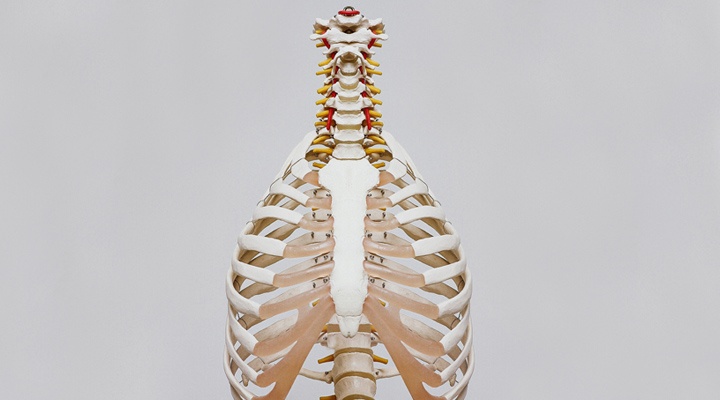Calcium is one of the major minerals found in milk. Manufacturers are advised to add calcium to nutritional formulations, and especially to fortify calcium in dairy, biscuit and ice-cream products. Learn everything you need to know about calcium and its nutritional specificities (infants, the elderly, pregnant women, etc.) in this report.
Contents:
- 1 - What is calcium and what does it do?
- 2 - Where does calcium come from and how is it absorbed?
- 3 - How does calcium deficiency present?
- 4 - Calcium intake and recommendations
- 5 - Dairy calcium's role in covering daily intake needs
- 6 - Armor Protéines dairy ingredients: Calcium concentrates and other minerals that naturally occur in milk
- 7 - List of calcium health claims authorised in Europe
1. WHAT IS CALCIUM AND WHAT DOES IT DO?
Calcium is a mineral (Ca2+) that is essential to a healthy organism. Calcium is key to strong bones and maintaining bone density throughout a person's lifetime: 99% of the body's calcium is found in our teeth and bones. The remaining 1% plays a crucial role in a number of vital functions:
- blood clotting,
- heart and muscle health,
- blood pressure,
- transmitting nerve impulses to muscles,
- keeping enzymes functioning, etc.
Calcium levels in the blood must remain constant, yet we eliminate calcium on a daily basis (urine, stools, sweat, etc.). If a person's calcium intake is too low, their organism will be calcium-deficient and will use the calcium in their bones to maintain sufficient calcium levels and ensure vital functions can work properly. This is why it's so important to consume enough calcium on a regular basis.
2. WHERE DOES CALCIUM COME FROM AND HOW IS IT ABSORBED?

Where calcium is absorbed and how it is regulated.
Our bodies cannot synthesise calcium, and as a result, we get this mineral from our food. The calcium found in food is mostly absorbed in the top third of the small intestine (duodenum/jejunum via an active transport process) and to a lesser extent in the ileum (passive transport process).
Various factors regulate calcium absorption in the intestine, varying depending on each individual and the food used to add calcium to the body. The type of calcium as well as the foodstuff's other components also play a role. As an example,
- vitamin D boosts calcium absorption,
- while phytates, oxalates and too much phosphorous inhibit absorption.
Calcium absorbability and bioavailability
By definition, calcium absorbability refers to the percentage of calcium present in the foodstuff that is absorbed by the organism. This percentage varies by foodstuff:
- around 35% to 40% for milk and cheese,
- 5% for spinach,
- 45% to 55% for cabbage,
- 32% for calcium-rich mineral water.
- …
The amount of calcium absorbed therefore depends on the calcium content of whatever foodstuff is consumed, as well as its absorbability.

Calcium bioavailability, meaning the proportion of calcium that is actually used by the organism, is also important. Dairy calcium is particularly bioavailable for bones. Simultaneous calcium and phosphorous absorption at a rate of 0.5 and 2 boosts bones' ability to retain calcium.
Important: calcium absorption abilities decrease with age and increase in some periods (pregnancy, adolescence, etc.). That's why recommended daily allowances for all categories of people and all physical states must be taken into account.
Find out more: Nutrition for the elderly: How do our calcium needs change over time?
3. HOW DOES CALCIUM DEFICIENCY PRESENT?
Consequences vary depending on age:
- Children may experience less bone growth and in some extreme cases, rickets.
- In teenagers, a calcium deficiency results in weaker bones, lower bone density*, which may result in a higher risk of osteoporosis later in life, and less fracture resistance. Osteoporosis is a bone disease characterised by a loss of bone density and changes to bone structure as the bones themselves become porous. As a result, the bones weaken and fracture more easily.
- In pregnant and breastfeeding women, deficiencies can have serious consequences: Severe hypertension, labour difficulties, etc. Newborns will 'drain' their mothers' bone calcium if they do not consume sufficient amounts.
- In the elderly, calcium deficiencies accelerate loss of bone density and increase bone fragility as a consequence.
*maximum bone mineral content by adulthood.
4. CALCIUM INTAKE AND RECOMMENDATIONS

Daily recommended intake of calcium
The European Food Safety Authority (EFSA) recently issued European recommendations on calcium intake:
- 450mg for 1-3 years
- 800mg for 4-10 years
- 1150mg for 11-17 years
- 1000mg for 18-24 years
- 950mg for 25+ years.
These guidelines aren't to be confused with recommended daily allowances designed to be included on labels (800mg/day for calcium).
In France, average calcium intakes nationwide are insufficient.
The French CCAF (Comportement et Consommation Alimentaire en France) 2013 study showed that calcium intake on average is insufficient among many French men, and even more so among women. Boys aged 15 to 18 had have an average intake of 1053mg/day and girls just 828mg.
The discrepancy between calcium recommendations and actual intake has significant consequences on average calcium nutritional needs*. On average, 30% of adults and 41% of children are not meeting their average nutritional needs. This situation is particularly concerning when it comes to children's nutrition, as childhood and adolescence are critical in terms of bone growth and establishing healthy bone density.
When it comes to the nutritional needs of elderly people, seniors are also at risk because of their heightened needs and increases in age-related bone disease risks. On average, 30% of 55-64 year-olds and 49% of those aged 65+ are not meeting their average nutritional needs. Because they need more calcium, more women aged 55 to 64 than men are failing to consume their average nutritional needs (42% of women compared to just 17% of men).
This data shows how important it is to keep an eye on calcium intake levels among children, teenagers and the elderly.
5. DAIRY CALCIUM'S ROLE IN COVERING DAILY INTAKE NEEDS
Dairy calcium has three major benefits:
- It's easily absorbed
- It's bioavailable
- It's present in most dairy products at high levels.
Furthermore, the fact that dairy calcium interacts with other milk components (proteins, minerals, etc.) means it has highly specific effects on health. To cover all your calcium needs, nutritionists and health authorities recommend consuming three dairy products per day (and an extra serving for children and teenagers). In some cases, products enriched with dairy calcium can also be of particular help in covering people's calcium needs.
6. ARMOR PROTÉINES' DAIRY INGREDIENTS: CALCIUM CONCENTRATES AND OTHER MINERALS THAT NATURALLY OCCUR IN MILK
Armor Protéines offers agri-food manufacturers a range of dairy, Clean Label and natural ingredients for calcium-enrichment application.
These dairy ingredients have been specifically developed and designed to be flawlessly integrated into different types of food matrices (fields of application: bars, drinks, blended recipes, desserts, spreads, etc.). They ensure optimum technical implementation (solubility, particle size, calcium/phosphorous ratio, bioavailability, etc.).
Discover the range of milk-derived minerals and bio-components developed by Armor Protéines: dairy calcium, lactoferrin, etc.
7. LIST OF CALCIUM HEALTH CLAIMS AUTHORISED IN EUROPE

Products that fulfil the conditions of use outlined in the claims may claim the following benefits listed below, aimed at children, adults and the elderly:
- Calcium contributes to normal blood clotting
- Calcium contributes to normal energy-yielding metabolism
- Calcium contributes to normal muscle function
- Calcium contributes to normal neurotransmission
- Calcium contributes to the normal function of digestive enzymes
- Calcium has a role in the process of cell division and specialisation
- Calcium is needed for the maintenance of normal bones and teeth
- Calcium helps to reduce the loss of bone mineral in post-menopausal women
- Low bone mineral density is a risk factor for osteoporotic bone fractures
- Calcium and vitamin D help to reduce the loss of bone mineral in post-menopausal women
- Calcium is needed for normal growth and development of bones in children
- Calcium and vitamin D are needed for normal growth and development of bones in children
For more information, get in touch with our teams. Armor Protéines draws on its experience and expertise in developing dairy ingredients for the nutrition and agri-food industries. We produce content aimed at keeping industrials and distributors informed, and offer a premium range of functional dairy ingredients.
References:
-Pu F, Chen N, Xue S – Calcium intake, calcium homeostasis and health – Food Science and Human Wellness 2016; 5: 8-16
-Question on dairy products and calcium, Jan-Feb 2017
-Scientific Opinion on Dietary Reference Values for calcium – EFSA Journal 2015;13(5):4101 [82 pp.].
-EU Register on nutrition and health claims
-EU Register of nutrition and health claims made on foods
Keywords: dairy calcium, bioavailability, bone health, milk minerals, calcium/phosphorous ration, EFSA, recommendations
 Emilie SCOTTI
Emilie SCOTTI





